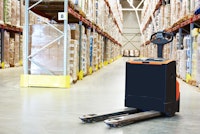SQF Quality Code: What You Need to Know for Edition 10
Safe Quality Food (SQF) Edition 10 is coming - and it raises the bar. If your site isn’t ready for change management, culture metrics, or tailored monitoring plans, audits will get tougher. Most manufacturers already certified to SQF Food Safety will need to assess: Are we prepared for what the Quality Code demands? And more importantly, can we prove it?
Unlike other Global Food Safety Initiative (GFSI) schemes, SQF is the only one with an optional Quality Code that goes beyond safety to control quality variance, overpack, and product defects. With new requirements launching in Q3 2025, this is the time to evaluate if your current systems will meet the moment or fall short.
What Is the SQF Quality Code?
The SQF Quality Code applies to facilities already certified to the SQF Food Safety Code. It's built on CODEX HACCP principles, but shifts focus from just safety to managing variability, improving consistency, and reducing product defects.
It’s applicable across all sector categories: primary production, manufacturing, storage and distribution, and food packaging.
Why it matters: The Quality Code positions your operation to meet increasingly demanding customer specs—from weight consistency to defect thresholds—while demonstrating a deeper commitment to quality systems beyond food safety alone.
What’s Changing in Edition 10?
Edition 10 of the SQF Codes will be published in Q3 2025, with full implementation expected by April 2026. According to SQFI, this update reflects industry-wide collaboration and represents a shift toward more proactive and risk-based management practices.
Key Edition 10 Enhancements:
Food Safety Culture: Companies must demonstrate comprehensive plans for communication, training, feedback, and continuous improvement.
Change Management: New requirement for documented procedures governing all types of operational and supplier changes.
Environmental Monitoring: A risk-based approach becomes mandatory, allowing tailored programs based on site-specific conditions.
Digitized Code Format: The new format will live at sqfi.com, with HTML, multilingual PDFs, downloadable checklists, and guidance materials.
To support implementation, SQF is also releasing an online conversion course that includes walkthroughs, checklists, and tools.
Steps to Get Certified in the Quality Code
If you're managing frequent customer complaints, return, giveaway or overfill loss, or quality issues tied to variability in process or equipment, the Quality Code can help you reduce variability and prove your commitment to product consistency.
If you think your company could benefit from being certified in the quality code offered by SQF, here’s a step-by-step breakdown of how they recommend pursuing certification:
Become certified in SQF Food Safety
Learn about their Quality Code by attending a training course
Appoint a Quality Practitioner in your facility
Pursue SQF Training
Document and implement the code
Select a certification body
Perform a pre-assessment audit of your site
Once these steps have been completed, you can then undergo the initial quality audit to pursue certification.
How Software Supports SQF 10 Certification
Managing HACCP, weight checks, and internal audits in spreadsheets or binders leads to fragmented oversight and limited visibility. Many manufacturers are adopting digital plant management systems like SafetyChain to unify and automate these processes, supporting both the SQF Quality Code and their customer and regulatory audit needs as well.
Weaver Popcorn digitized its QA documentation using SafetyChain, reducing audit prep by 60 hours per audit and becoming audit ready 24/7 for its four annual audits—including SQF.
Lehi Mills, preparing for its first SQF certification, rewrote its QMS in tandem with a full SafetyChain rollout. They passed with a score of 94 and saved over $50,000 annually in labor by managing sanitation, quality, maintenance, and production from a single digital platform.
Ready for Edition 10?
SQF Edition 10 isn’t just a code revision—it’s a shift toward operational maturity, proactive compliance, and strong food safety culture. Whether you’re aiming to certify to the Quality Code or modernize your audit program, now’s the time to get started.
Start assessing where variability and compliance gaps are costing you and get your programs ready before the Q3 release.
Looking for a partner to help you get there?
SafetyChain helps food manufacturers digitize their quality and compliance programs, reducing audit prep time, improving accuracy, and eliminating costly variability.
With SafetyChain, you can link digital records, procedures, and forms directly to SQF clauses, demonstrating alignment with Edition 10's core principles: say what you do, do what you say, and prove it. Traceability, accountability, and verification are built in so you're not just ready for audits, you're ready every day.
Schedule a consultation today to see how SafetyChain can help you get ready for SQF Edition 10 and stay audit-ready 24/7.

